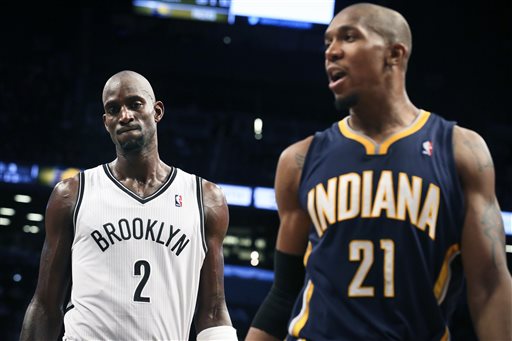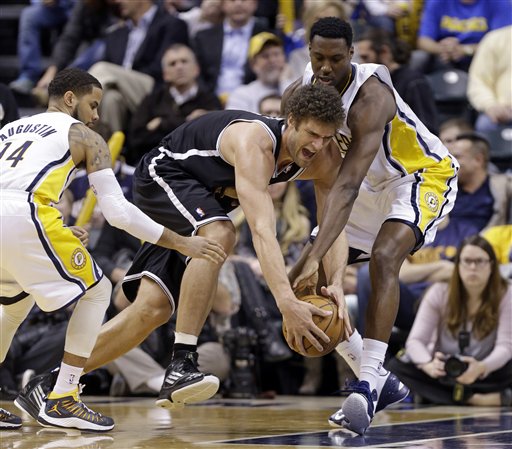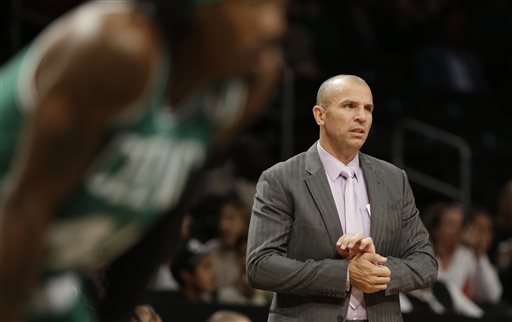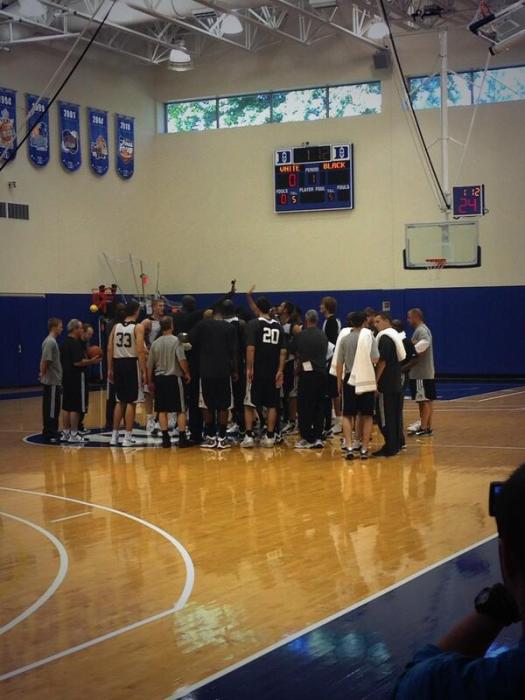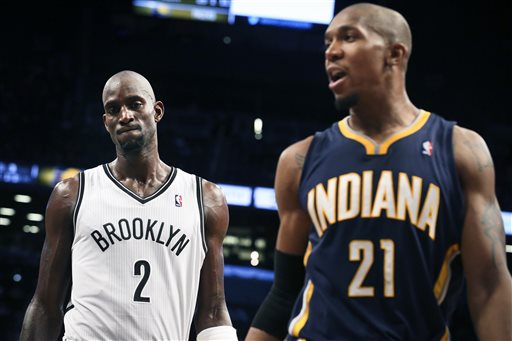
During the preseason, Brooklyn Nets forward Kevin Garnett talked about his defensive goals for the Nets in 2013-14.
“So top-five is obviously something — (Jason Kidd) said top-10, I wouldn’t give us that. We’re gonna have to be one of the top three teams in defense coming out and giving a valid effort every night to be something in this league.”
Unfortunately, his predictions are a bit off thus far. So far the Nets haven’t been top three, or four, or 10, or 15. They’re currently ranked 16th overall in defensive efficiency through six games. It’s a small sample size and with that, not much can be extrapolated without more data. And their pick-and-roll defense has been strong so far. But if the goal is to be a top-three defense, there’s a ton of work that needs to be done.
Perhaps the most interesting trend about the Nets’ below-average start on defense this season has been the contrast between first-half defense and second-half defense. Here are the numbers:
First-half: 95.3 points allowed per 100 possessions
Second-half: 107.1 points allowed per 100 possessions
A tale of two halves, indeed. In the first half, the Nets play like the fifth-best defense in the league; in the second, they play like its second-worst.

Oddly, this problem doesn’t exist when Andray Blatche replaces Kevin Garnett. The five-man combination of Blatche, Lopez, Pierce, Johnson and Williams is allowing just 87.8 points per 100 possessions in the first-half, compared to 89.7 in the second half — not much of a difference and a two very solid defensive ratings at that.
We know Garnett has struggled defensively (has that ever been said before?) thus far, as Danny Savitzky has outlined, but it’s quite stunning to see the contrast in his production when broken up by half: with Garnett on the floor, the Nets allow 90 points per 100 possessions in the first half, and 122 points per 100 in the second half. 122!
Though this discrepancy is the largest among the Nets’ starters, the other four players in the starting unit have stark contrasts in their first and second half defensive ratings as well.
Is it fatigue? Is it age? Is it a fluke? Is it Jason Kidd’s halftime speech? There’s no real way to tell, but it’s concerning.
One glimmer of hope: the issue wasn’t present with Garnett last season. He posted a defensive rating of 96 in the first half of games, compared to 97.2 in the second half of games, a negligible difference.
When the Nets lost to the Indiana Pacers on Saturday, they made some costly mistakes in crunch time; turnovers, silly fouls, miscommunications, etc. More importantly though, their 3rd quarter defense failed them as they allowed Indiana to shoot 58% and were out-rebounded 12-6 en route to a 28-21 3rd quarter in favor of Indiana.
Though it’s been just six games, the Nets’ defense has been underwhelming. Their effort and intensity needs to remain constant throughout the entire game, not just one half. The odd contrast is concerning, especially if you’re under the belief that its cause is age and fatigue. 93% of the season has yet to be played, and these issues will become more clear in the coming weeks.

